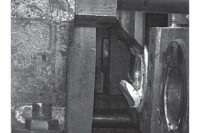Regardless of whether they are called drones or unmanned aerial vehicles (UAVs), their popularity is increasing among consumers, military leaders and institutions around the world. In fact, analysts at market researcher Teal Group predict that global spending on UAVs will reach $14 billion by 2024.
Most people are familiar with the US military’s use of drones for surveillance and targeted bombing operations, as well as the general public’s interest in test-flying simple UAVs over their neighborhoods. Less well-known is the fact that a growing number of colleges allow their students to study, build and enter UAVs in competitions. Some schools even offer degrees specific to UAVs or unmanned aerial systems.
The University of Toronto (UT) takes the former approach. Recently, the school’s UAV and Aerial Robotics Division (ARD) teams took part in the 2017 Unmanned Systems Canada national competition. Thirteen teams from schools across Canada participated in the 9th annual event.
Teams were judged on how accurately their UAVs reported goose population attributes, including the geolocations of detected nests, the number of distinct goose species observed and a census count for each of these species. Both UT teams entered a multi-rotor UAV, which flew autonomous search patterns while capturing images at approximately 200 feet above the ground.
The ARD team took first place in the design phase of the competition, while the UAV team captured first place in the flying phase. It also took second place in the design phase. Team ARD was fourth in flying.
Among the suppliers sponsoring the UT teams is Teledyne DALSA, which provided two Genie smart cameras for each UAV. The TS-C4096 enabled complete coverage of surveillance regions for effective target detection and characterization. The lighter and smaller Nano C1940 provided high-resolution color imaging. Both teams interfaced their cameras to an Odroid-XU4 single-board computer running a cloud-based Ubuntu operating system.
“We had great success using the cameras for practical applications like target recognition and identification, precision agriculture and wildlife monitoring,” explains Erik Chau, UAV team leader. “[The cameras’] GigE-V Framework for Linux interface [enabled us] to acquire high-resolution images at fast frame rates.”
A small form factor allows the compact Nano C1940 to produce 2.3-megapixel images (resolution of 1,920 by 1,200 pixels) at frame rates of 84 fps. The larger TS-C4096 captures 12-megapixel images (4,096 by 3,072 pixels) at a rate of 10 fps.
Both cameras transmit data over standard CAT-5e and CAT-6 cables to distances of up to 100 meters. They can also be operated in TurboDrive mode to send pixel information at a rate in excess of the nominal 125 megabytes per second. Despite the increase in speed, there is no loss of any image data or quality. In addition, the technology does not require any hardware or software changes to a network or application.
According to Chau, Teledyne is committed to continuing its sponsorship of both teams in 2018. They, in turn, plan to use the Nano C5100 camera for surveillance in their UAVs next year.
For more information on smart cameras, call 519-886-6000 or visit www.teledynedalsa.com.





